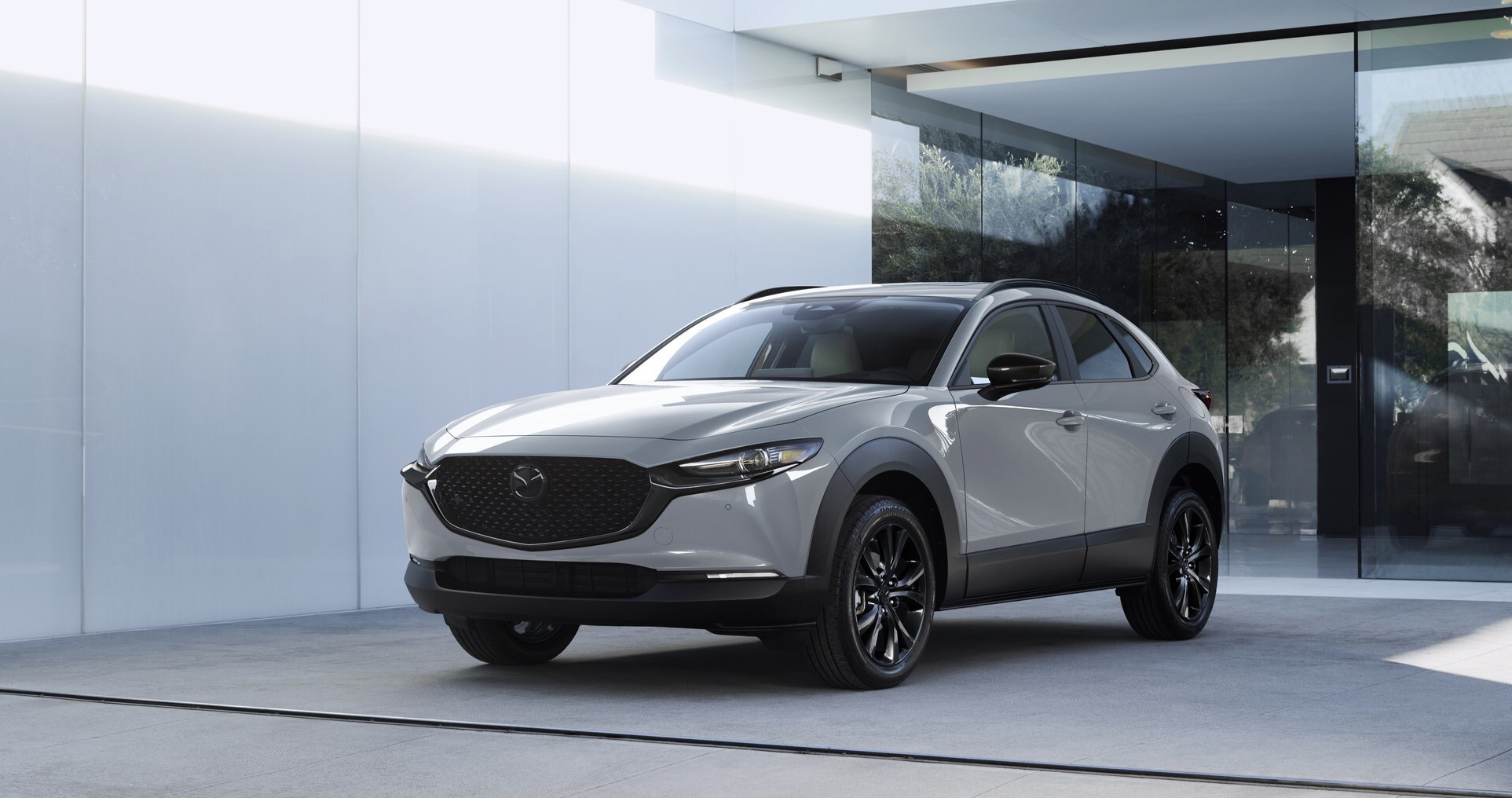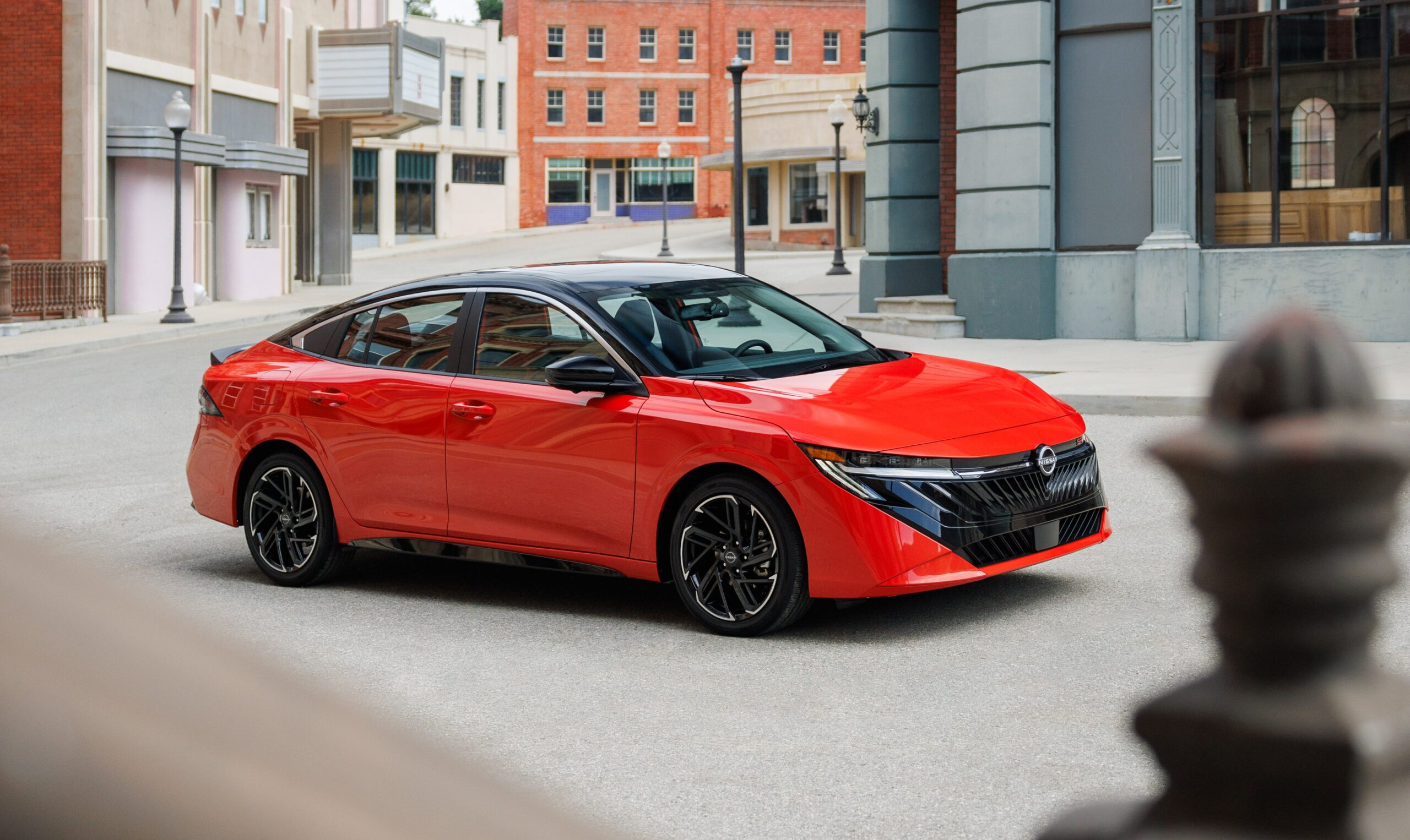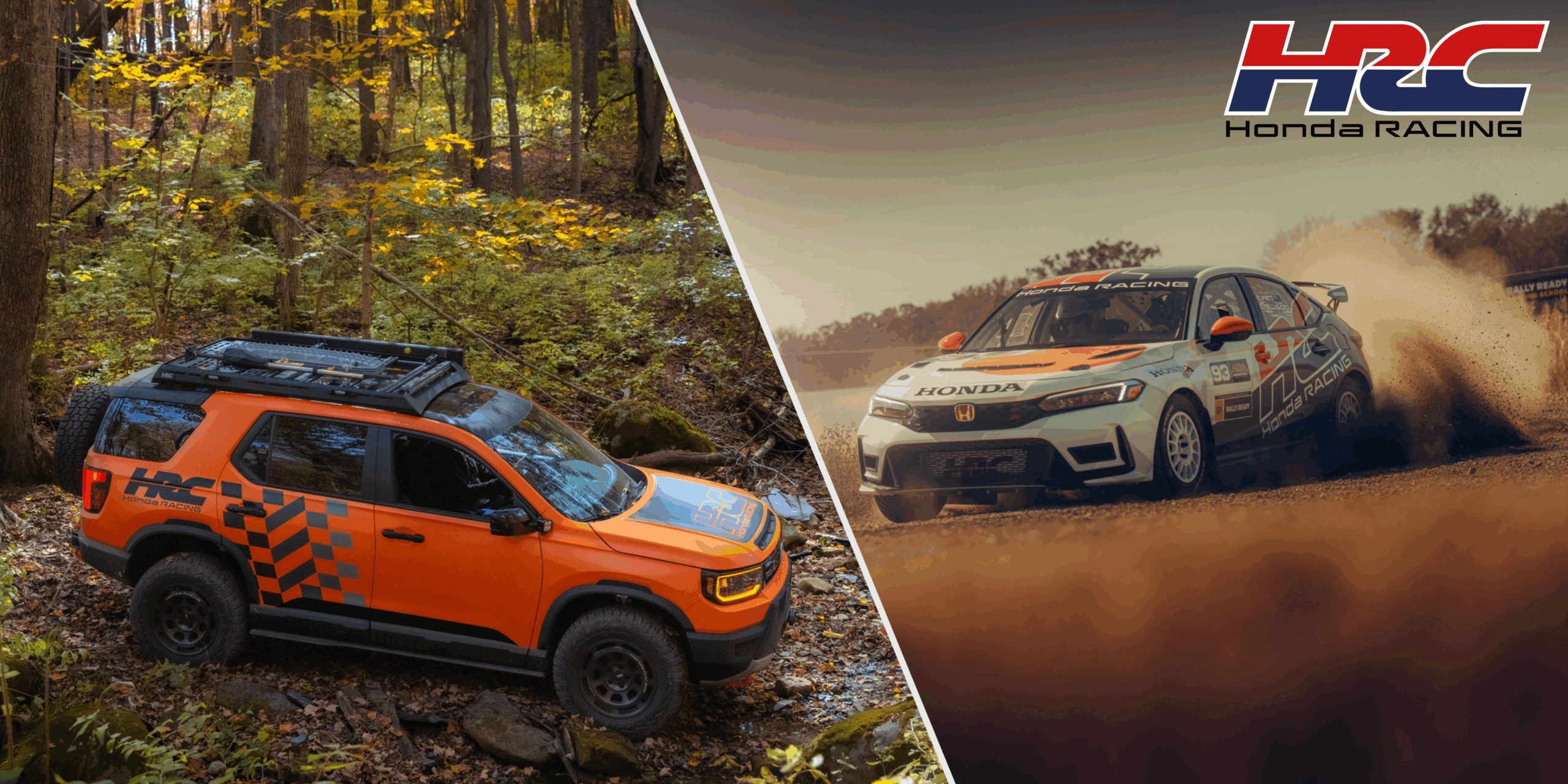Mazda has two compelling small cars in its lineup, and you may be asking: which one is right for you? Subcompact SUV or compact hatchback? Both the Mazda CX-30 and Mazda3 offer strong propositions. They drive well, have class-above interiors, and sumptuous style. So, which Mazda deserves a spot in your driveway? Let’s compare them and see!
Mazda CX-30 vs. Mazda3: Ride and Handling
Under the skin, the CX-30 and Mazda3 are essentially identical. MacPherson strut front suspension and a torsion beam in the rear. Where they differ is in tuning. The CX-30 has more compliance than the stiffer Mazda3. As a result, it rides smoother and performs better in dealing with road imperfections, expansion joints, and patchy surfaces. Additionally, its extra ground clearance and suspension travel over the Mazda3 keep you isolated from harsh impacts. As a result, the CX-30 has an edge in refinement over its compact car sibling, elevating its upscale feel.
The Mazda3 has a sportier feel. Its firmer ride and planted handling make it one of the better-driving cars in its segment. Even without the independent rear suspension, this thing is so much fun to drive. However, that comes at the cost of ride comfort. Between the stiffer suspension tune, the lower ride height, and the torsion beam out back, it can feel crashy over rough pavement. Yes, it’s impeccably smooth on well-paved surfaces, but it lacks the refinement found in the CX-30, as well as some of its rivals.
On the bright side, both vehicles have excellent steering. Although not as quick as the previous generation Mazda3, it offers a great feel and plenty of communication. Most importantly, it feels natural and does exactly what you want. The CX-30’s setup is ever so slightly slower than the Mazda3’s, but it remains on the sporty side, especially for a subcompact SUV.







Familiar Power
Open the hood of either the Mazda CX-30 or the Mazda3, and you’ll find two familiar powertrains. Most models have a naturally aspirated 2.5-liter four-cylinder with up to 191 hp and 186 lb-ft of torque, depending on the model year. This engine has more than enough grunt for the majority of the population. However, keep in mind that it needs revs because most of its power resides in the mid range.
Mazda’s six-speed automatic transmission willingly downshifts to get you to that sweet spot. It’s also nice and smooth, adding to the refined feel. Unfortunately, it has some quibbles. The transmission likes to spend as much time as possible in high gears, resulting in it feeling a little clunky in certain situations. Should you want a workaround for that, only the Mazda3 gives you one: an available six-speed manual gearbox. This unit has satisfying throws and a springy, communicative clutch. By giving you full control of shifting duties, you can easily exploit the engine’s mid-range torque, adding to the fun-to-drive factor and connected feel.
What if all you want is power on all the time? That’s where the optional turbocharged 2.5-liter four-cylinder comes in. Available only on the higher trims, this mill makes 250 hp and a whopping 320 lb-ft of torque when using premium fuel. Pumping regular drops the output to 227 and 310 lb-ft. Regardless, this engine gives the CX-30 and Mazda3 abundant power with little turbo lag. Step on the accelerator, and in comes a wave of torque that immediately takes you to triple-digit speeds without any effort. This engine also pairs better with the six-speed automatic because it can stay at higher gears even when you need more power. No need to rev high thanks to all of that low-end torque.







The Efficiency Game
In terms of fuel efficiency, both the CX-30 and Mazda3 have similar figures. With the naturally aspirated 2.5-liter four-cylinder, they have an EPA-estimated rating of between 27 to 30 mpg combined. City ratings range between 24 to 27 mpg, while highway numbers hover in the mid-30 mpg range for both vehicles. Certain model years also have cylinder deactivation on the base engine, which helps enhance real-world efficiency by allowing it to shut off two cylinders.
In real-world driving, we easily beat the EPA figures. Our 2025 Mazda3 with a six-speed manual consistently gets over 40 mpg on the highway and above 30 mpg in combined driving. The CX-30 we drove some weeks ago did the same thing, making these cars even more compelling options. A word of warning, though: both the CX-30 and Mazda3 have tiny fuel tanks. Front-drive Mazda3s have a 13.2-gallon tank, while AWD models and the CX-30 only have even less at 12.7 gallons. That means driving range may be at a premium, so plan to fuel up sooner while on road trips.
What about the turbocharged variants? They’re even less efficient. The EPA rates the CX-30 Turbo at 22/30/25 mpg city/highway/ combined, while the Mazda3 Turbo checks in at 23/31/26 mpg. Together with their 12.7-gallon fuel tanks, expect to fuel up after around 250 miles on road trips. In city driving, expect these two to suck down even more fuel.
Mazda CX-30 vs Mazda3: Style Over Function
Let’s face it, the CX-30 and Mazda3 look good. Their curvaceous profiles stand the test of time, and nearly half a decade into their current generations, they’re still quite attractive. Both exude a premium aura, especially against their respective mainstream competitors. The Mazda3 hatchback goes all-in on sleek style, which is complemented by a controversially thick C-pillar. Meanwhile, the sedan sticks to a more traditional shape elevated by its sleek profile.
Unfortunately, the sumptuous style comes at the cost of interior space. Both vehicles have cramped back seats suited only for shorter drives. Small item storage comes at a premium, and cargo space is limited, especially with the rear seats up. At just a smidge over 20 cubic feet, it may seem a lot, but the low roofline of the CX-30 and the Mazda3 hatchback limits vertical space. Folding the rear seats down yields more capacity. However, both fall short of their competitors.







About the Tech…
On the tech side, Mazda’s infotainment system works fine. Once you get over the learning curve, that is. Most trims have an 8.8-inch display controlled via a rotary controller, while higher trims use a larger 10.25-inch touchscreen. Although it responds quickly to your inputs, the interface has layers of submenus, meaning many functions are hard to get to. Additionally, it can feel distracting to use on the move, especially with Apple CarPlay or Android Auto. Models with the larger screen are slightly easier to use, but it’s hard to reach for touch controls. On the bright side, both models’ 12-speaker Bose premium audio system rocks, offering an immersive and clear listening experience.
What about driver assistance features, you ask? They work fine for the most part. However, the lane-keeping assist component can get jerky with its corrections. Sometimes, it doesn’t do anything until you’re halfway into the other lane, which. Blind spot monitor and rear cross-traffic alert also get overly intrusive at lower speeds. Additionally, both get annoying because they somehow don’t deactivate while stopped.
Mazda CX-30 vs. Mazda3: The Verdict
Although not direct competitors, the Mazda CX-30 and Mazda3 are similar enough that consumers may cross-shop them. From the underpinnings to the powertrain, tech, and interior space, these two share so much in common. However, this is far from the same product, a different wrapper situation, because Mazda gave each one a distinct character.
The CX-30 offers a refined experience with its smoother and more isolated drive. Meanwhile, the Mazda3 feels tighter, sportier, and more athletic than its SUV sibling. Whichever one you get, though, you’ll have a distinctly Mazda feel. These cars drive like nothing else and offer a premium experience without the price tag. Now the question is left for you to answer: sporty and agile? Or sporty and refined? Either way, it’s hard to go wrong with either of Mazda’s small car offerings.




